Cruiser
Omono
Abies procera
Collected at 3000’. Late June.
- Site: Exposed. Rocky. Confined root growth. Typical damaging agents are wind with ice/snow in winter and summer drought.
- Tree: Appears healthy, but not vigorous. Strong apices. Buds have opened. Shoots are extending, fresh and on most branches. Epicormic buds opening/extending on trunk and branch collars.
Features spike knots, fine dead branches, short interwhorls, foliage close to trunk, maturing branch structure, proportionally small branches and needles (mainly on small trunk).
- Amount of fine roots obtained:
acceptable (low, acceptable, a lot.)
For potting, no roots were removed, but a small amount of soil and rocks was scraped from bottom of root mass.
Native soil kept intact around interior roots.

Utilizing a plastic pot that is a bit larger than the root volume.

Added substrate. 2:1 bark: pumice. 1/8”-1/4” for both.
Mixed in a bit of charcoal and organic fertilizer with mycorrhizae.
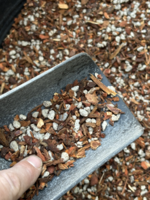
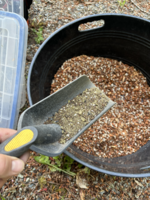
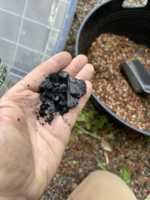
Added pumice top dressing. Stones that had fallen from the root mass were placed on the surface.
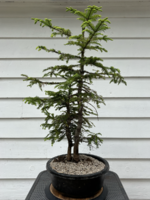
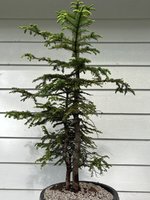
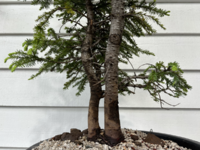
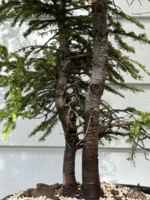
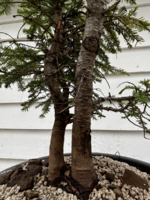
With closed visual gap between trunks…
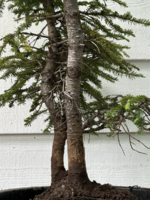
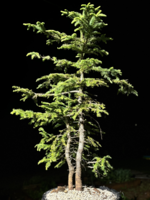
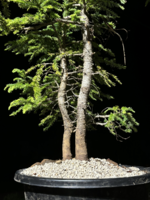

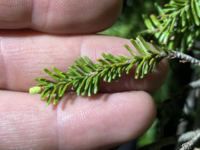
Summer plan: Early care is to make sure that recovering roots are not overtaxed.
Keep in mostly shaded location that receives dappled light in the afternoon. Once new growth hardens off, if retention is good and vigor apparent move to part-sun location.
Mist on hot days.
Collected at 3000’. Late June.
- Site: Exposed. Rocky. Confined root growth. Typical damaging agents are wind with ice/snow in winter and summer drought.
- Tree: Appears healthy, but not vigorous. Strong apices. Buds have opened. Shoots are extending, fresh and on most branches. Epicormic buds opening/extending on trunk and branch collars.
Features spike knots, fine dead branches, short interwhorls, foliage close to trunk, maturing branch structure, proportionally small branches and needles (mainly on small trunk).
- Amount of fine roots obtained:
acceptable (low, acceptable, a lot.)
For potting, no roots were removed, but a small amount of soil and rocks was scraped from bottom of root mass.
Native soil kept intact around interior roots.

Utilizing a plastic pot that is a bit larger than the root volume.

Added substrate. 2:1 bark: pumice. 1/8”-1/4” for both.
Mixed in a bit of charcoal and organic fertilizer with mycorrhizae.



Added pumice top dressing. Stones that had fallen from the root mass were placed on the surface.





With closed visual gap between trunks…





Summer plan: Early care is to make sure that recovering roots are not overtaxed.
Keep in mostly shaded location that receives dappled light in the afternoon. Once new growth hardens off, if retention is good and vigor apparent move to part-sun location.
Mist on hot days.
Attachments
Last edited:

